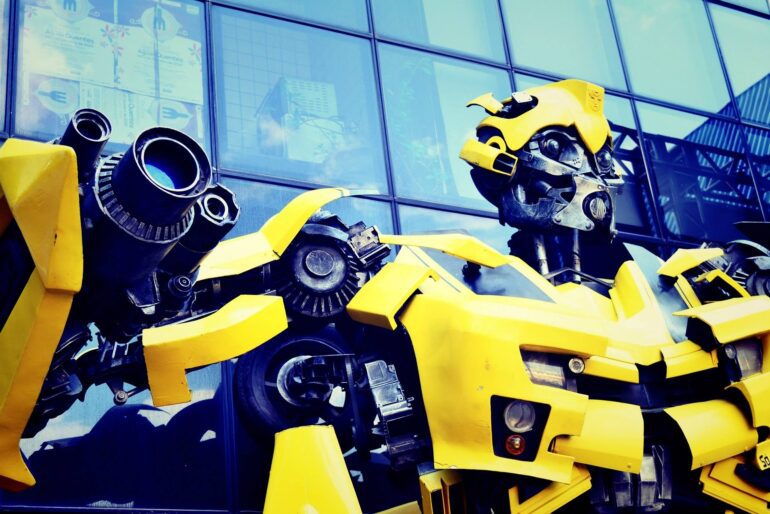TL;DR:
- Scientists from EPFL leverage large language models (LLMs) in robotic design, introducing a new era of collaboration between humans and AI.
- Chat-GPT, an LLM, provides invaluable insights and sparks human creativity in physical design.
- The study consists of two phases: ideation and realization, where Chat-GPT aids in refining design parameters and offering technical guidance.
- Collaborative exploration and AI acting as a “funnel” are highlighted as effective modes of collaboration between humans and LLMs.
- Ethical concerns such as bias, plagiarism, and intellectual property emerge when using LLMs in design generation.
- Prudent management of LLMs holds immense potential for the robotics community to advance the field ethically and sustainably.
Main AI News:
Artificial intelligence (AI) has witnessed a seismic shift with the emergence of large language models (LLMs), transforming the way we communicate, learn, and express creativity. These neural networks possess an unrivaled capacity to process vast amounts of textual data, captivating the imaginations of researchers and innovators worldwide. Now, a groundbreaking study by scientists from École Polytechnique Fédérale de Lausanne (EPFL) has propelled this technology to new frontiers by applying it to the realm of robotic design.
In a recent publication in Nature Machine Intelligence, Josie Hughes, the esteemed leader of EPFL’s Computational Robot Design & Fabrication Lab, alongside Francesco Stella, a brilliant PhD student, and Cosimo Della Santina from TU Delft, leveraged the power of Chat-GPT, an LLM, to conceive and develop a fully functional robotic tomato-harvester. This study establishes an extraordinary framework for collaborative design between humans and language models, shedding light on the immense possibilities and potential risks associated with integrating artificial intelligence tools into the field of robotics.
While primarily a language model focused on text generation, Chat-GPT proved to be an invaluable asset, providing unparalleled insights and igniting human creativity in physical design. Hughes explains, “Despite Chat-GPT’s primary function as a language model, it offered remarkable insights and intuitive guidance for physical design, displaying remarkable potential as a sounding board to stimulate human creativity.”
The study unfolded in two pivotal phases: ideation and realization. During the ideation phase, the researchers engaged in profound discussions with Chat-GPT to establish the purpose, design parameters, and specifications of the robotic system. Drawing from the language model’s access to a vast array of global data, including academic publications, technical manuals, books, and media, they explored future challenges faced by humanity and identified robotic crop harvesting as a viable solution to the pressing issue of global food supply. As the dialogue progressed, they harnessed Chat-GPT’s capabilities to refine their questions and seek advice on specific design aspects, such as the gripper’s shape, as well as the optimal materials and code required for precise device control.
Stella underscores the significance of this collaborative exploration, stating, “For the first time, an AI system can ideate new systems, automating high-level cognitive tasks. This could potentially shift human roles toward more technical responsibilities, while computation aids engineers with technical implementation.”
Recognizing the various modes of collaboration between humans and LLMs, the researchers also highlighted additional approaches in their paper. One such mode, known as “collaborative exploration,” harnesses AI to enhance researchers’ expertise by contributing vast knowledge from diverse fields. Additionally, AI can act as a “funnel,” refining the design process and providing technical input while humans retain creative control.
However, the researchers caution that each collaboration mode carries inherent logical and ethical risks, necessitating careful evaluation. Employing LLMs raises concerns of bias, plagiarism, and intellectual property, particularly when determining the novelty of an LLM-generated design.
Hughes raises a crucial point, stating, “In our study, Chat-GPT identified tomatoes as the ‘most worth’ crop for robotic harvesting. However, this may be biased toward crops that have more literature coverage, rather than those with a genuine need. When decisions are made outside the engineer’s scope of knowledge, significant ethical, engineering, or factual errors can occur.”
Despite these valid concerns, Hughes and her team, drawing from their experience, remain optimistic about the immense potential of LLMs if managed prudently. They emphasize the robotics community’s responsibility in utilizing these powerful tools to advance the field ethically, sustainably, and in a manner that empowers society at large.
The fusion of human ingenuity and the raw computational prowess of language models opens up boundless possibilities for innovation in robotic design. As we venture further into this uncharted territory, it is imperative to tread carefully, ensuring that potential risks are mitigated and the benefits are harnessed to drive responsible and inclusive progress.
Conclusion:
The integration of large language models in robotic design represents a groundbreaking development that transforms the way humans collaborate with artificial intelligence. This innovation opens up new avenues for creativity and efficiency in the field, with the potential to revolutionize various industries. However, careful consideration of ethical implications and the management of intellectual property will be crucial as the market navigates the adoption and integration of LLMs in robotic design. Companies that successfully harness the power of language models while addressing these challenges will gain a competitive edge and drive progress that is both responsible and inclusive.

